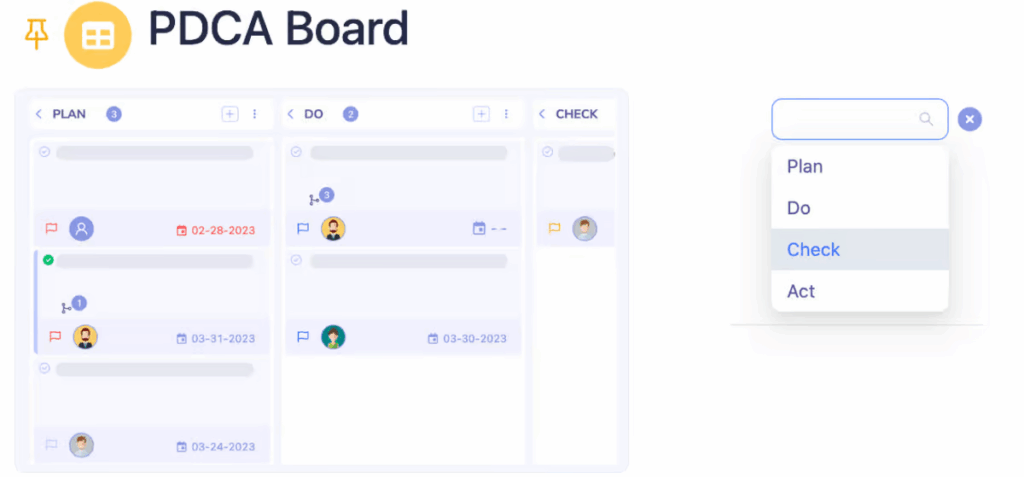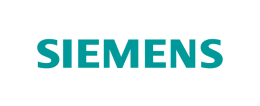What Is the PDCA Cycle (Plan Do Check Act Methodology)?

| Audience: | Manufacturing Managers, Healthcare Administrators, Operational Excellence and Lean Management Practitioners, HR Coordinators, Organizational Leaders |
| Last updated: | December 10, 2025 |
| Read time: | 8 min |
- Origins & Evolution: Born from Shewhart’s work in the 1920s and later refined by Deming, the cycle has shaped modern quality management and Lean practices worldwide.
- Four Iterative Steps: Plan (set goals and strategies), Do (implement), Check (evaluate results), and Act (adjust and standardize) – all repeated in continuous feedback loops.
- Wide Applications: From quality management and process optimization to project oversight and structured problem-solving, PDCA ensures organizations adapt, innovate, and improve over time.
What Is the PDCA or Deming Cycle? Plan-Do-Check-Act Explained
The PDCA cycle is a systematic framework that solves problems through iterative learning. Often called the Deming cycle, this scientific method was developed from Shewhart’s work and refined by W. Edwards Deming, providing a structured approach for continuous improvement and root cause analysis across industries.
The cycle creates a feedback loop in which teams plan, implement, verify, and standardize, adapting to new challenges. Start improving processes today with our free PDCA template.
PDCA Summary Table & Free Template (At-a-Glance)
This concise PDCA framework serves as a standard operating procedure template for implementing continuous improvement in your business processes.
| Step | Objective | Typical Actions | Example KPI |
|---|---|---|---|
| Plan | Identify problems and set clear goals | Root cause analysis, SMART goal setting, and resource allocation | % of objectives with defined metrics |
| Do | Implement solutions systematically | Training staff, executing action plans, documenting procedures | Implementation completion rate |
| Check | Evaluate results against objectives | Data collection, performance analysis, gap identification | Variance between actual vs. target performance |
| Act | Standardize or adjust processes | Process standardization, feedback collection, and corrective actions | % of improvements sustained after 90 days |
The PDCA cycle transforms business processes through structured, continuous improvement of current performance. Employees can leverage these tools to drive systematic change across departments. How to apply this: print this table near your team board to keep improvement cycles visible and actionable.
Origin & History of the PDCA / Deming Cycle
The PDCA cycle traces back to physicist Walter Shewhart at Bell Telephone Laboratories in the 1920s. During World War II, these quality control concepts gained traction, but W. Edwards Deming popularized the methodology worldwide. The cycle evolved through several key periods:
- 1920s: Walter Shewhart develops the original statistical process control methods and the cycle
- 1950s: W. Edwards Deming introduces these concepts to Japanese manufacturers, helping spark Japan’s post-war economic miracle
- 1980s: Deming refines the model to PDSA (Plan-Do-Study-Act), emphasizing deeper analysis
The PDCA cycle is fundamentally derived from the scientific method: hypothesis, experiment, and evaluation. You’ll sometimes see it written as P-D-C-A to emphasize each distinct phase, though the underlying principles remain consistent regardless of notation.
What does PDCA stand for?
PDCA stands for Plan, Do, Check, and Act—a systematic approach to continuous improvement in any process. The four stages include:
- Plan: Define the problem and develop solutions
- Do: Implement the plan on a small scale
- Check: Evaluate results against objectives
- Act: Standardize successful changes or restart the cycle
Also known as the ‘Shewhart cycle’ (named after Walter Shewhart, who originated it at Bell Laboratories in the 1920s), the PDCA steps form a continuous improvement loop where each phase builds on the previous one. The Check phase is often overlooked but critical for validating that your actions produce the intended outcomes before standardizing processes.
When implemented correctly, PDCA creates a structured approach to problem-solving that prevents recurring issues and drives sustainable improvements. How to apply this: verify which step your team usually skips and add it to your daily checklist.
How to Use the PDCA Cycle: Step-by-Step Guide (Plan-Do-Check-Act)

What are the steps of the PDCA cycle?
Step 1 – Plan
The Plan phase begins with identifying root causes of problems and setting SMART objectives (specific, measurable, achievable, realistic, and timely). This step requires developing detailed action plans that specify tasks, responsibilities, timelines, and resources. For example, a manufacturing company might plan to reduce defects by 20% over six months by implementing specific quality controls.
Customer satisfaction metrics should be established at this stage to measure the effectiveness of the improvement. How to apply this step: use the 5 Whys technique to identify true root causes before planning solutions.
Step 2 – Do
The Do phase transforms planning into action. This phase includes allocating necessary resources (workforce, materials, equipment), training employees to acquire new skills, and methodically implementing the plan.
Meeting deadlines and milestones is crucial for maintaining momentum. Thorough documentation of all procedures, unexpected problems, and deviations creates a foundation for analysis in the next phase. How to apply this step: start with a small-scale implementation to test your solution before full deployment.
Industry leaders leverage Tervene to solve issues faster

Step 3 – Check
The Check phase evaluates the effectiveness of implemented actions. Many managers skip this critical stage, but it’s essential for identifying gaps in organizational processes. The PDCA cycle requires disciplined data collection, comparison against predefined objectives, and root-cause analysis of any deviations.
| Issue | Data Collected | Corrective Actions |
|---|---|---|
| Long wait times | Customer feedback surveys | Process redesign |
| Quality defects | Statistical process data | Equipment calibration |
| Low engagement | Employee satisfaction scores | Training program |
Transparent sharing of results with all stakeholders promotes a culture of safety and continuous learning. Based on this assessment, decide whether to maintain the plan or revisit it. How to apply this step: Create visual management boards that show actual results versus targets.
Step 4 – Act
The Act phase closes the loop and prepares for the next improvement cycle. When results fall short of expectations, implement corrective actions and reassess. Establish feedback channels to gather input from employees, customers, and stakeholders about the effectiveness of your solutions.
The PDCA model emphasizes standardizing successful processes to ensure improvements become permanent. This standardization creates operational stability while promoting a culture of continuous learning, innovation, and adaptation. How to apply this step: document standardized processes as the new baseline for future improvements.
The PDCA cycle is inherently iterative. After completing the Act phase, return to Plan with new insights to sustain an ongoing pursuit of excellence.
What is the difference between PDCA and other methodologies?
PDCA vs PDSA model vs DMAIC
| Framework | Main Focus | Best Use-Case |
|---|---|---|
| PDCA | Process verification and variation control | Manufacturing processes require regular checks with minimal disruption |
| PDSA | In-depth analysis and scientific learning | Healthcare and complex systems, where a deeper study of outcomes is essential |
| DMAIC | Data-driven, structured problem-solving | Complex, large-scale projects requiring significant one-time improvements |
When selecting a methodology, managers should consider their project scope and objectives. Choose PDCA for quick, iterative improvements to existing processes. Opt for PDSA (also known as Deming’s Wheel) when deeper analysis and learning are required for root cause analysis. Select DMAIC for complex problems needing substantial, data-driven solutions with long-term control measures. Each framework serves different improvement needs, from daily operational tweaks to major transformations. How to apply this: match the project scope to the framework that fits best.
Standardize and structure your continuous improvement initiatives with Tervene’s tools
Is PDCA still relevant today? Real-world PDCA examples
Toyota
Toyota embeds PDCA deeply in its manufacturing DNA, using it for both daily operations and strategic improvements. Before implementing any automated process, Toyota engineers conduct PDCA-driven pilot tests to identify potential failure modes. This approach ensures that new technologies enhance quality without introducing defects relative to current performance.
Lesson learned: Small-scale testing before full implementation prevents costly mistakes.
Nestlé
Nestlé applies PDCA principles through its Nestlé Continuous Excellence (NCE) program across its bottling plants worldwide. At California facilities, the company implemented systematic water conservation measures using the PDCA methodology, resulting in annual savings of 55 million gallons. This process-focused approach enables Nestlé to evaluate current performance against targets and make continuous, data-driven improvements.
Lesson learned: Structured improvement cycles deliver measurable environmental and operational benefits.
Nike
Nike transformed its manufacturing practices by applying PDCA to improve working conditions in its factories. The company implemented a scoring system to assess production facilities and offered incentives for improvements. This continuous improvement approach helped Nike double its size from $100 billion in 2015 to over $200 billion in 2021.
Lesson learned: Enabling those closest to the work drives sustainable improvement.
Mayo Clinic
Mayo Clinic views the PDCA cycle as the fundamental tool in its quality improvement framework. The clinic applies this methodology to enhance patient care by reducing wait times and improving treatment quality. Through small tests of change, Mayo identifies potential solutions to problems before scaling them across its healthcare system.
Lesson learned: Consistent application of PDCA principles creates a culture of excellence in healthcare delivery.
How to apply this: replicate one tactic from these companies in your next PDCA cycle.
PDCA for Quality, Project Management & Problem-Solving

Quality management
PDCA establishes a systematic approach to quality management in Lean and Six Sigma environments by creating continuous evaluation and improvement cycles. Managers implement this methodology to detect defects early, standardize best practices, and ensure consistent quality across all business processes. How to apply this: integrate PDCA with your quality audits to drive systematic improvements.
Process improvement
The PDCA methodology drives process improvement by adapting to technological changes and evolving customer demands. Its iterative nature makes it ideal for developing new operational processes or enhancing existing ones, fostering a culture of continuous improvement in which employees at all levels participate. How to apply this: Engage frontline workers to identify improvement opportunities through structured PDCA boards.
Project management
Project managers can leverage PDCA by planning with Gantt charts, visualizing milestones, and executing projects methodically. The cycle helps teams assess progress against expectations and adjust strategies in real-time, ensuring business processes remain aligned with organizational objectives despite changing conditions. How to apply this: incorporate PDCA checkpoints into your project schedule.
Problem-solving
Tervene’s digital tools integrate PDCA boards into workspaces and action-plan tracking, making it easy for managers to categorize tasks by PDCA steps for maximum visibility. How to apply this: Use Tervene’s verification forms and checklists to verify new project rollouts.
Accelerate problem-solving with our tools

Enhance your continuous Improvement methods
Frequently Asked Questions (FAQ) about the PDCA and Deming Cycles
The PDCA cycle consists of Plan (set objectives and create action plans), Do (implement solutions on a small scale), Check (measure results against goals), and Act (standardize successful changes). This structured approach forms the foundation of Deming’s wheel for process improvement.
PDCA drives continuous improvement by creating a systematic feedback loop that never ends. Organizations using a PDCA template can repeatedly refine processes, turning improvement into a habit rather than a one-time event, ultimately building organizational learning capacity.
PDCA uses ‘Check’ to verify results against expectations, while PDSA replaces this with ‘Study’ to emphasize deeper analysis of outcomes. Dr. Deming revised his original plan do check act cycle to encourage more thorough examination of results before taking action.
PDCA effectively structures project management by providing a framework for planning initiatives, executing tasks, evaluating progress, and refining approaches. Project managers can integrate the plan do check act methodology to ensure continuous project optimization and delivery.
Choose PDCA for simpler, iterative improvements that require quick cycles, while select DMAIC for complex problems that require rigorous data analysis. PDCA supports ongoing operational refinements, whereas DMAIC tackles specific, larger issues where statistical validation is essential to success.
The Deming cycle is another name for the PDCA cycle, introduced by W. Edwards Deming in Japan during the 1950s. Though originally developed by Walter Shewhart, Deming popularized this systematic approach to continuous improvement that transformed manufacturing quality worldwide.
PDCA is not the same as Kaizen but serves as the fundamental tool that drives Kaizen implementation. While Kaizen represents the philosophy of continuous improvement, the PDCA cycle provides the structured methodology to achieve this philosophy through systematic problem-solving.
To use the PDCA cycle effectively, start by clearly defining your problem and developing a solution plan, implement changes on a small scale, measure results against objectives, and finally standardize successful changes or restart the cycle with new insights for continuous improvement.
The purpose of PDCA is to create a systematic approach for quality management and process improvement through structured problem-solving. This iterative cycle helps organizations reduce defects, enhance customer satisfaction, manage change effectively, and build a culture of continuous learning.



























